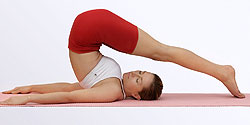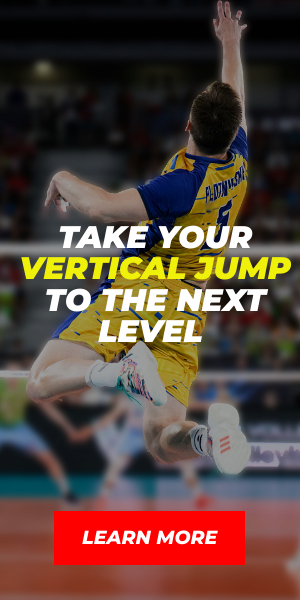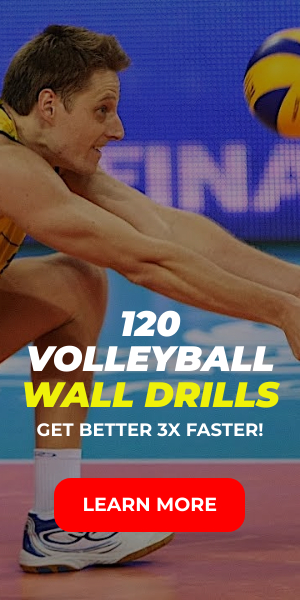You know already how to stretch and warm-up from my previous article. Today we will focus on the range of motion, improving flexibility and warm-up length.
1. What about Range of Motion?
I am a firm believer in having appropriate range of motion for the sport being performed! I expect my volleyball athletes to be able to minimally touch their toes! That gives me an indication of their back and hamstring range of motion. This is important considering the positions that many of the reception players have to be in when digging a ball. If their hamstrings and adductors have poor range of motion then it is highly likely they will become injured when trying to get low to the ground quickly. If I’m working with a different athlete, say a gymnast or dancer, then they need much more range than simply touching their toes…so as you can tell, the range of motion is sport, position and person specific! The dynamic warm-up will help improve functional ROM but for more efficient flexibility results focus on your flexibility separately.
2. Can I use Static Stretching to improve flexibility?
Most definitely! But, if you are trying to improve range of motion, don’t expect your 5 minutes of post workout stretching to do the trick! You need to spend more time to make increases in tissue length. This is where Yoga is an excellent tool. An hour spent in yoga a few times a week will do wonders for athletes struggling with tight hips, back and shoulders. Hot Yoga (bikram or moksha) is another great choice but beware of the sweat loss if you are in heavy training or competition because you’ll need considerable recovery from the heat and sweat loss. I’d suggest hot yoga in the off-season. PNF stretching (proprio-neuromuscular facilitation) is another more intense form of stretching that will provide results faster than static stretching alone. It involves contract/relax techniques and there are a few methods of doing it but your best bet is to have someone experienced (coach or therapist) teach you how to do it with a partner. Here is a little more research to chew on…
• Gastrocnemius (calf muscle) EMG 17% greater post static stretch but vertical jump 5.6% lower. Wallmann 2005
• Yoga lessened symptoms of DOMS (delayed onset muscle soreness). Boyle 2004
• PNF stretching at 3 sec, 6 sec and 10 sec of hold relax all produce significant gains in ROM Bonnar 2004
3. How long should the warm-up take?
Typically the warm-up will take 15-25 minutes. You want to warm up for your dynamic warm up by jogging and breaking a sweat initially (which is usually about 5 minutes) and then start the dynamic movements. There are several components that play into this answer, but here are two key factors. The training cycle – you may need to reserve as much energy as possible because of a very intense time of the season. Temperature and humidity – in higher temperatures and humidity you will find that your warm-up requires less time but a real focus on efficiency. In lower temperatures you may have to repeat movements multiple times before you get the physiological effects. Of course the sport, and time until the match or practice key too, just practice your warm up sequence in training so it feels just right prior to competition!
One more thing… As I said, there is always the exception to the rule. I have found with many veteran or older athletes that they want/need a moment for one or two static stretches prior to training or competition. This is usually because they have a particular area that is always a little tight. This might be due to an old injury or extended amounts of time in one sport or movement pattern that creates a specific tightness. In this case, as long as they do a full sport specific dynamic warm-up they will be best prepared.
The short amount of time they do the static stretch gives them the mental confirmation of whether that area is more or less reactive that day and how they need to proceed to deal with it (longer warm-up, easing into practice drills or more ROM work after practice). This is ok and very specific to individuals who know their bodies very well. As a coach, you can allot 5 minutes sometime during a dynamic warm-up to address this. With younger athletes with less experience, this extra time for one or two static stretches is unnecessary and often detracts from their preparatory focus.
So there you have it…the short and the stretched-out (ha ha) version of what type of warm-up and when it should be used. The next question is “how do you do a dynamic warm-up and what exercises should I choose to warm-up my whole body in all movement planes?” I’ve got the answer for that too! We are currently producing our “Dynamic Warm-up” by Kari Schneider. We have a 30 minute instructional DVD with over 30 movements that will get you ready for your sport! It will sell for $20 and will be available soon. To pre-order email ks@empowerconditioning.com and train smart.





